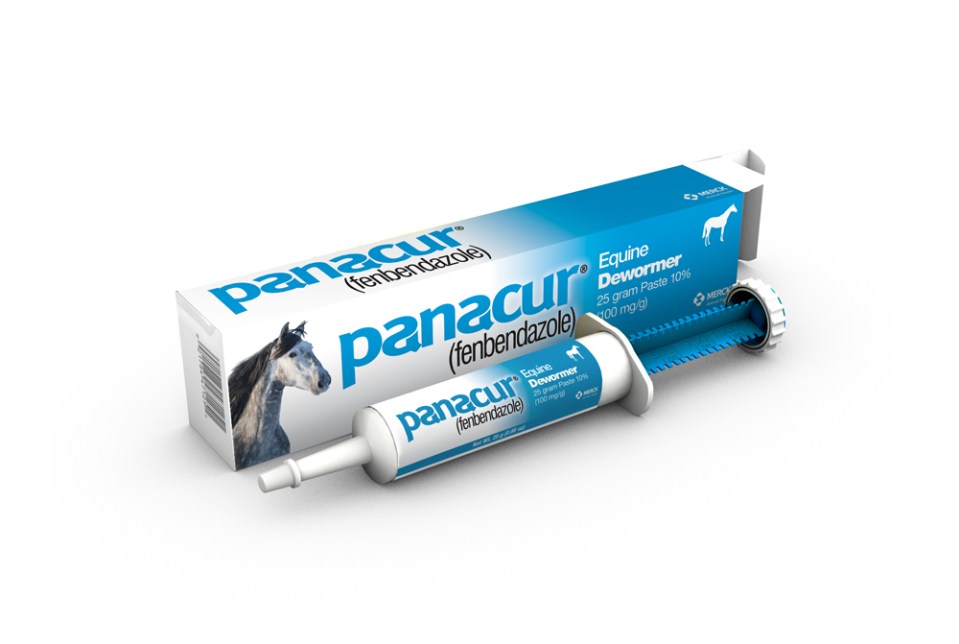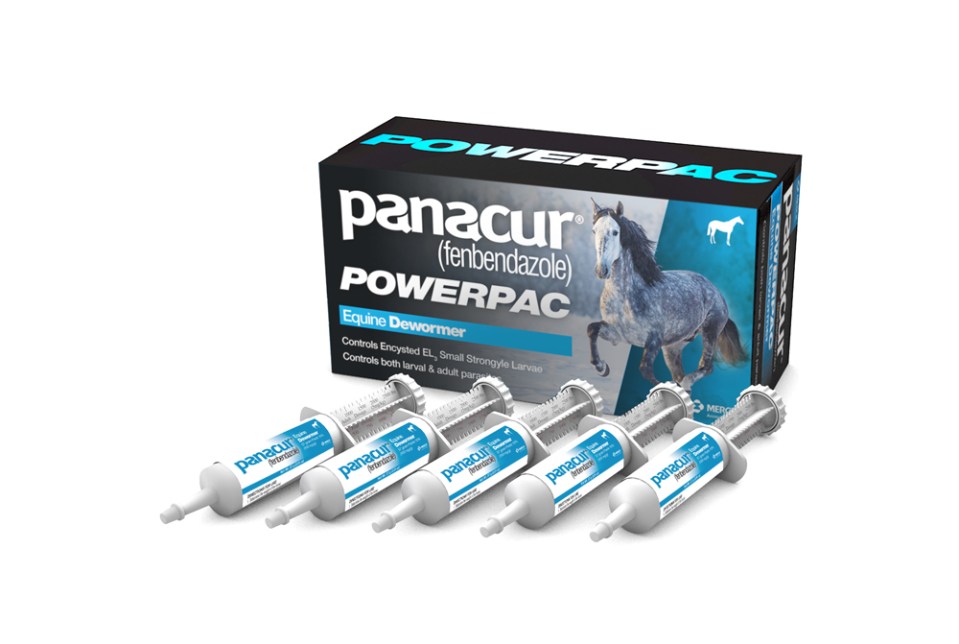
Large strongyles
Parasite Overview
There are three primary species of large strongyles that infect horses: Strongylus vulgaris, Strongylus endentatus and Strongylus equinus. Of the three types of large strongyles, S. vulgaris—the bloodworm—causes the most severe disease in horses. It burrows into the walls of arteries that supply blood to the small and large intestines, which can cause colic, tissue death, impaired intestinal function, twisting of the intestine, intussusception, bleeding and even intestinal rupture.
Merck Animal Health Solutions

PANACUR® (fenbendazole) PASTE 10%
PANACUR® Paste 10% is indicated for the treatment and control of large strongyles (Strongylus edentatus, S. equinus, S. vulgaris), encysted early third stage (hypobiotic), late third stage and fourth stage cyathostome larvae, small strongyles, pinworms (Oxyuris equi), ascarids (Parascaris equorum), and for the control of arteritis caused by fourth stage larvae of Strongylus vulgaris in horses.

PANACUR® (fenbendazole) POWERPAC
PANACUR® (fenbendazole) Paste 10% is indicated for the control of large strongyles (Strongylus edentatus, S. equinus, S. vulgaris), encysted early third stage (hypobiotic), late third stage and fourth stage cyathostome larvae, small strongyles, pinworms (Oxyuris equi), ascarids (Parascaris equorum), and arteritis caused by fourth stage larvae of Strongylus vulgaris in horses.
Parasite Life Cycle
- Adult strongyles produce eggs that exit the body in horse’s feces.
- Eggs develop into infective larvae that live on pasture vegetation or in stalls.
- Horse consumes grass, feed or water contaminated with infective larvae.
- Larvae migrate through horse’s body.
- Larvae become egg-laying adults in large intestine.
Clinical Signs
- Fever
- Decreased or absent gastrointestinal noises
- Hyperemic mucous membranes
- Normal to slightly elevated heart rate
- No or mild pain
- Negative gastric reflux
- Sore mass palpable on rectal examination
Risk Factors
- Age less than 3 years old
- Contaminated environment
- Environmental conditions conducive to egg and larval survival (mild temperatures)
- Presence of “high egg shedder” horses in herd
Note: Widespread use of anthelmintics has made S. vulgaris much less common than it was 50 years ago.
References
“AAEP Internal Parasite Control Guidelines,” American Association of Equine Practitioners, 2019, aaep.org/sites/default/files/2021-03/Internal_Parasite_Guidelines.pdf.
Thomas R. Klei, “Gastrointestinal Parasites of Horses,” Merck Veterinary Manual, May 2019, www.merckvetmanual.com/horse-owners/digestive-disorders-of-horses/gastrointestinal-parasites-of-horses.
“Strongyles in Horses,” Extension Foundation, Jan. 22, 2020, horses.extension.org/strongyles-in-horses.
Important Safety Information
Do not use in horses intended for human consumption.
